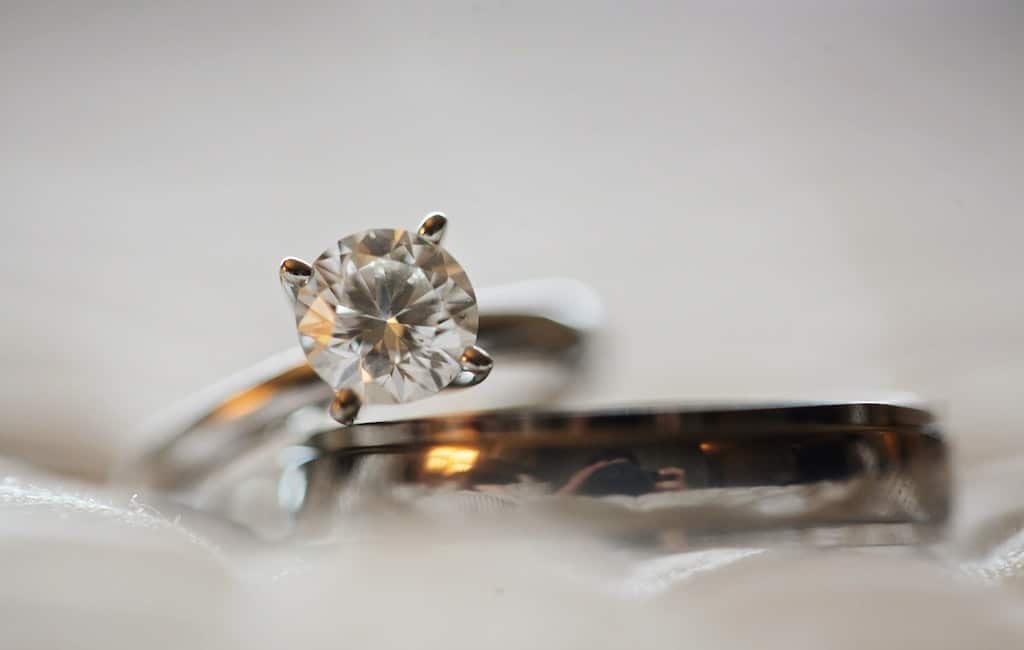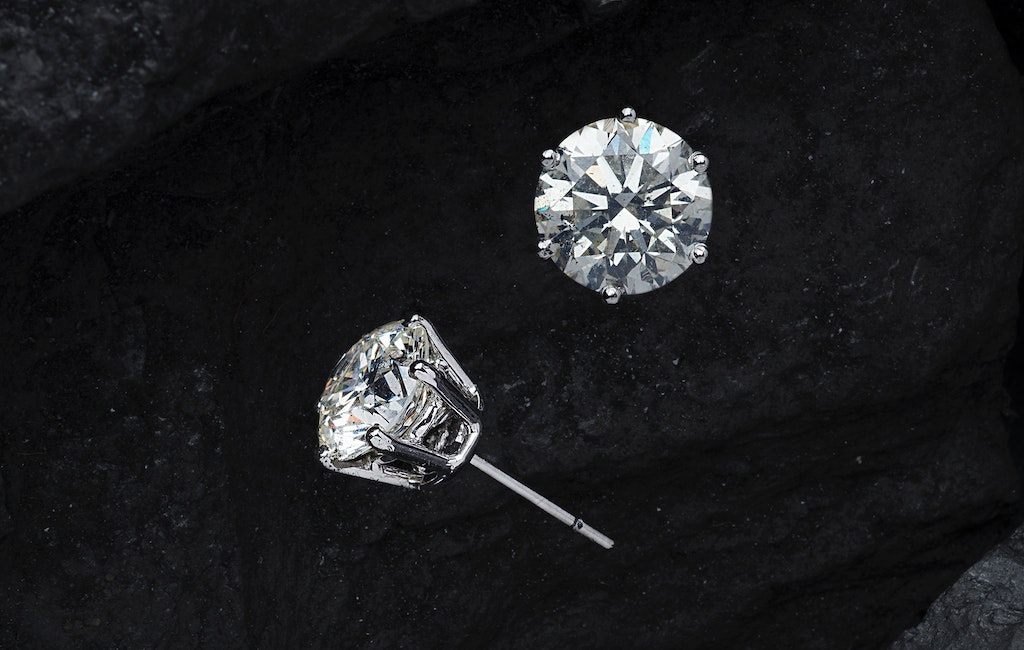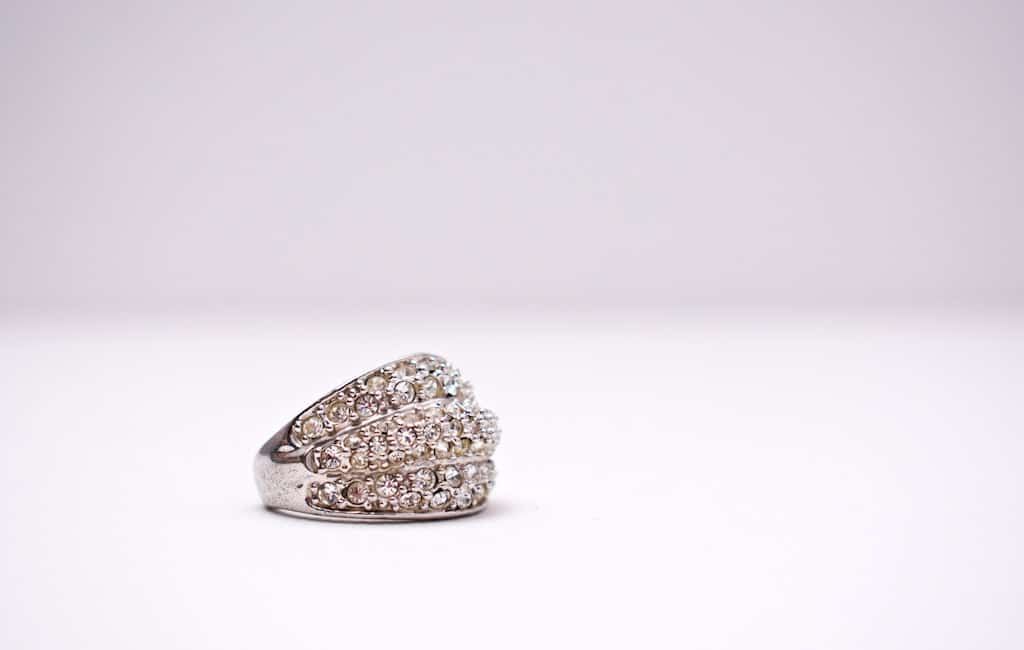Why It Is Better to Grade Diamonds Loose?
The stated quality of a stone marked “rated in the mounting” has lost credibility because it is risky to evaluate a diamond when it is not loose.
If you wish to sell your diamond, this might be an issue since it can make it more difficult to acquire the greatest price.
A prospective buyer can make you an extremely low offer or even decline to purchase the diamond due to the possibility that your stone will turn out to be of poorer grade.
Additionally, you won’t be able to sell your stone for the proper amount if its quality is genuinely fine.
Should You Buy Diamonds That Are Not Graded Loose?
It is one thing if you choose not to have your stones taken out in order to have them evaluated after you have purchased them; this is a matter of personal preference. What about diamonds marketed as “graded in the mounting” though?
You should be cautious when purchasing stones based on their claimed grade since you already know that the quality of stones that are not graded loose may not be accurate.
You could overpay by hundreds or even thousands of dollars if it turns out that one or more of their quality attributes are really worse.
Take a closer look at the diamond certificate the next time you are purchasing diamond jewelry. Ask to have the stone graded loosely if it reads “graded in the mounting” and you truly want the item. Alternatively, proceed.
It should not be an issue to have the diamond graded outside of the mounting if the vendor has nothing to hide.

Valuing Diamonds
Believe it or not the size of a diamond is not the most important characteristic when determining the value or cost of the diamond. In order to determine the value that is associated with a diamond, it is assessed based on its colour. The Gemological Institute of America (GIA) is the organisation that is responsible for the research, education and classification of gemstones. As such the grading of gems such as diamonds falls under their portfolio and was instituted by them.
Did you ever stop to think about how diamonds actually got their value and price tag? Interestingly, diamonds are valued for what you cannot see, which is their lack of visible colour. Therefore a diamond increases in value the higher their level of colourlessness.
However, we know that there are always exceptions to the rules and diamond grading is no different. There are some diamonds that have some amount of visible colour, that are considered to be of high value. Some fancy coloured diamonds, those that have pink and blue hues, are considered high value. That being said, most diamonds that are found in jewelry stores range between being colourless, and near colourless with some having slight hints of yellow and/or brown.
Grading Diamonds
The GIA colour grading system is used by the standard classification system that is used with the industry and begins with the letter D. Diamonds that are graded D are those that are considered to be absolutely colourless. The range continues through to the letter Z, which represents those diamonds that have hints of yellow and/or brown.
Prior to the GIA’s use of this current grading scale, there were several other systems that were loosely used. There were no real standards with these grading scales, which led to many inaccuracies in the classification of diamonds. Some of these methods were the use of alphabet letters A, B and C. However, there were several descriptions of what a grade A stone looked like, making there several types of grade A diamonds, and it varied depending on location and people using their own discretion.
There was also the use of Arabic numbers (0,1,2,3…), roman numerals (I, II, III…) and descriptions like saying gem blue or blue-white that were used to classify the diamonds. These systems were also inconsistent based on the location of the classification or the persons doing it. The GIA, therefore, decided to officially create this standard for classification that is used worldwide. It does not matter where you are or who is doing the classification the results will be the same.
The GIA made the decision to start with the letter D because it had never been used in a diamond grading scale. This made it possible to start fresh with the classification system, which eliminated the possibility of any misunderstandings. A particular, predefined, scale of appearance is used to characterize and specify each grade level. Diamonds are classified into their specific colour grades by comparing them to other coloured gems under controlled lighting conditions.

Grades D-F
Letter grades D, E and F represent diamonds that are completely colourless and most times have an icy look due to their high level of delicacy. These are ranked the highest quality diamonds available on the market, making them the most desirable colour grade for diamonds to choose from. A diamond with a D grade level is considered to be the highest grade and is a very exquisite and rare gem and as such, diamonds in this category are the most expensive diamonds that money can buy.
Diamonds with colour grades E and F have incredibly minute traces of colour. This colour cannot be seen by the naked eye but based on the equipment used in classifying diamonds, these diamonds can be identified. Nonetheless, these gems are considered to be highly desirable as they show up as brilliantly sparkly and are still valued by several persons.
The next category of diamond letter grading is those diamonds classified as G, H, I and J. These are those gems classified as being nearly colourless. Though they are not considered completely colourless, the G and H grade gems only have noticeable colour when they are compared to letter grades D, E and F.
As such, they are very high in value, while also being more budget friendly. These may be some of the best diamonds to consider when choosing your engagement rings or other jewellery as you can get the amazing icy look without breaking the bank. However, I and J colour diamonds usually appear colourless to the naked or untrained eye yet they contain elements that cause them to have traces of colour.
The letter grades K, L and M are classified as having a faint yellow colour. This faint yellow colour is noticeable to the naked eye. Notwithstanding the fact that they have some colour to them, these gems are still known and sought after for their brilliance and beauty.
Diamonds that are ranked below letter M and continue through to Z are those that have a more yellow or brown colour. These diamonds may not be desired by mainstream consumers, however, there are many collectors and retailers who find them quite attractive. These diamonds are normally kept on display or even sometimes used in jewelry making.
Grades and Colour
As was mentioned earlier, there are some diamonds that have a yellow or brown colour. Some of these only have a slight yellow or brown colour while there are others that exhibit a more intense yellow or brown colour. Both of those groups of diamonds are referred to as fancy-coloured diamonds. These types of gemstones are very rare as only a small percentage of them contain natural colour.
The colour of the diamonds, that is the level of the colour hue and intensity, can either detract from or enhance the value of the diamond. Some natural diamond colours are grey, white, blue, yellow, orange, red, green, olive, pink, purple, brown, and black. These coloured diamonds tend to show up more often. However, the rarest diamond of the coloured diamond family is the red stone.
Just as colourless diamonds have a specific grading system that classifies them, fancy diamonds also have a particular system of grading that classifies them. This classification is not by way of comparison. Fancy-coloured diamonds are compared to master stones that already have a predetermined colour. The most important determining factor when grading coloured diamonds is how strong their colour is. The more intense the colour of the diamond, the higher its value.
Final Comments
The five factors listed by the GIA determine a diamond’s clarity grade. The aspects to take into account are Size, Scope, Position, Nature, and Relief. The size, number, and location of inclusions in the stone all affect the clarity grade and value. An addition placed under the table will be less appealing and more obvious than one placed closer to the stone’s edge (girdle).
Additionally, due to the high degree of reflection in diamonds, if an inclusion is deep and situated too near to a pavilion facet, it tends to reflect all around the stone like a house of mirrors, decreasing its value and appeal. Value also depends on the sort of inclusion. The durability and value of a diamond are significantly impacted by inclusions that break the diamond’s surface, thus they should be avoided.

